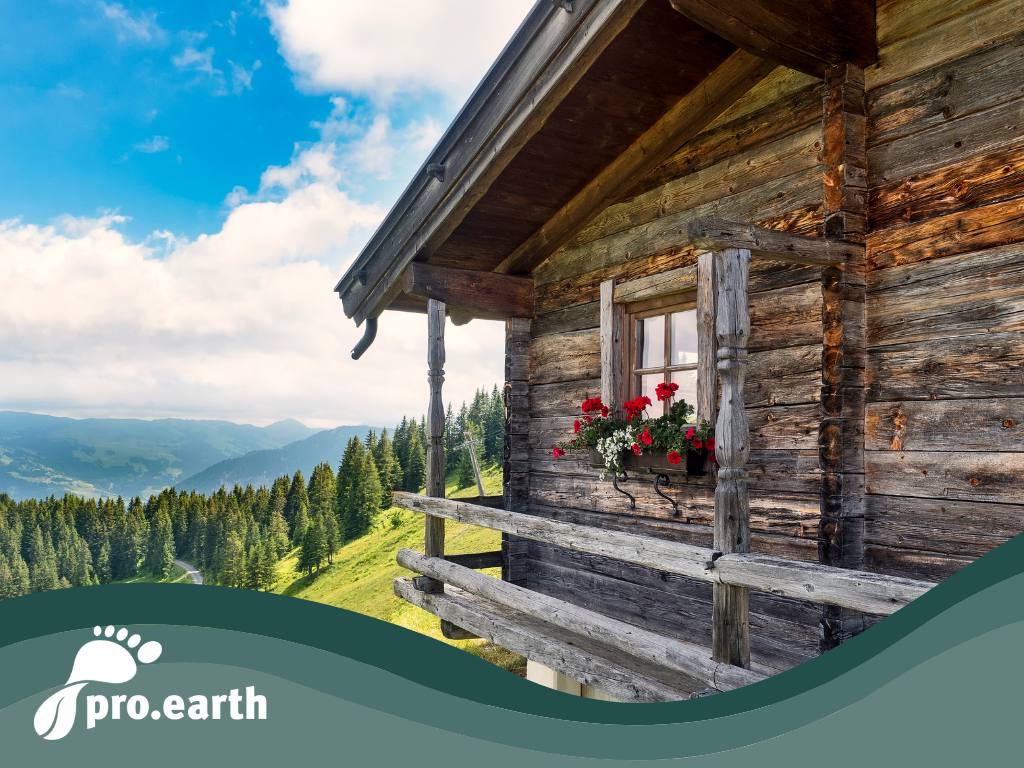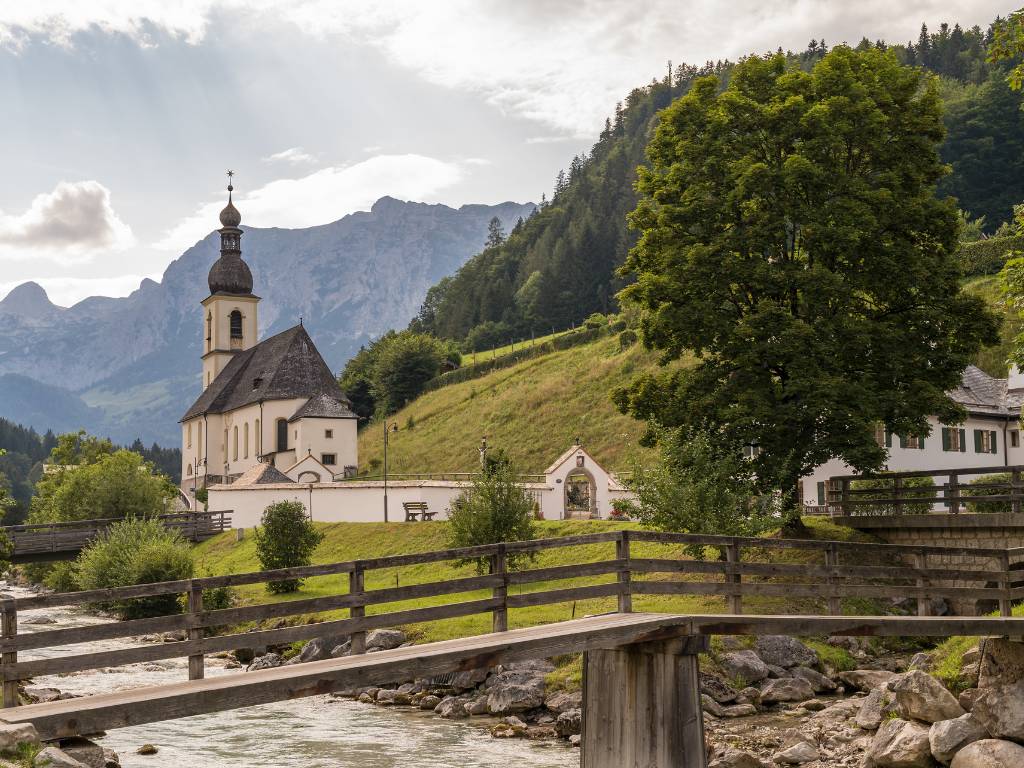How sustainable tourism is saving the Alpine region

Many Alpine mountain regions are facing an urgent challenge - climate change. In some places, attempts are being made to counteract the effects in the short term with the massive development of ever higher mountain regions and the expansion of snow-making facilities, to the detriment of the environment and future generations. But there are also other ways.
The climate situation in the Alpine region
In recent decades, the climate has changed noticeably throughout the Alpine region. On the one hand, average temperatures have risen and on the other, winters have become shorter. The snow line has shifted upwards and snow-sure periods have become scarcer. All of this has had a massive impact on winter tourism, one of the region's main sources of income.
According to the Austrian Climate Office, the average temperature in Tyrol has risen by around 1.3 degrees Celsius since 1980. Winters have become around 17 days shorter and the snow melts on average 20 days earlier in spring than in the 1970s.
The impact on tourism
100 million vacationers
Tyrol is a popular tourist destination in both winter and summer. Between 2000 and 2019, the number of tourists in the Alps increased by 40%, while the number of overnight stays per person halved. In total, the entire Alpine region has an incredible number of around 100 million tourists per year. And most holidaymakers and day trippers arrive in their own cars. This requires sufficient parking spaces. Traffic has become a major problem in many Alpine communities.
https://news.pro.earth/2023/07/26/klimawandel-in-den-alpen/
However, climate change is threatening the tourism industry and the incomes of the people who depend on it. A lack of snow in winter and heatwaves in summer affect the tourism infrastructure and the local economy.
According to a 2021 study by the University of Innsbruck, climate change has the potential to shorten the winter sports season in Tyrol by more than a month by 2050. This could lead to a significant economic loss for the region.
Ever more bombastic
At the moment, many tourism professionals are trying to extend the shortening season with ever higher ski lifts, even more snow cannons and other technological achievements, all of which have a negative impact on the fragile Alpine ecosystem. The summer season is also being filled with more and more attractions such as fun parks, viewing platforms, suspension bridges, zip lines, summer toboggan runs, mountain bike trails, paragliding, rafting and much more. The Alps as one big amusement park. But where will it end?
The path to sustainable tourism
However, there is hope in the form of sustainable tourism, also known as ecotourism. This approach emphasizes the protection of the environment and the promotion of low-impact tourism that preserves natural resources and respects local culture. It stands for ecologically and socially responsible travel and should not harm nature or the local population.
-
Renewable energies
Investments in renewable energies to reduce energy consumption in the tourism industry - for example in solar-powered cable car systems, PV systems for hotels, biomass heating and much more
-
Gentle mobility
Promotion of public transport (trains, electric buses) and cycle paths with bicycle rental systems to minimize private transport.
-
Preserving ecosystems
Conservation and protection of alpine ecosystems and biodiversity - no further development of new ski areas, instead snowshoe hikes, cross-country ski trails and other alternatives to alpine skiing
-
Raising awareness
Educating and sensitizing tourists to environmentally friendly practices - More nature-friendly activities such as winter hiking or snowshoeing, cross-country skiing, ski touring or tobogganing instead of alpine skiing
-
Away from mass tourism
The enormous range of different leisure activities puts a strain on nature: from ski touring and snowshoeing in winter to canyoning, e-bike tours and climbing in summer. In order to practice these individual sports in an environmentally friendly way, rules and good visitor management are necessary.and measures to control the flow of visitors are becoming increasingly important, as is the preservation of the townscape and the containment of land consumption by new tourist infrastructure such as hotel buildings, parking lots and major events such as the Winter Olympics.
-
Second homes and hotel buildings
Some places degenerate into ghost towns as soon as the tourist season is over and real estate prices in these places are so high that locals can hardly afford housing. Urban sprawl has also increased enormously in many tourist areas. The German Nature and Biodiversity Conservation Union writes very aptly: "Pseudo-folkloristic chalet villages break up harmonious villagescapes, are extremely land-intensive and should no longer be approved." These developments must be curbed. There are now many huts (33% of all huts in Germany, Austria and Switzerland) that have been awarded the Alpine Association's environmental seal of approval, as well as hotels that are managed sustainably and are constantly making improvements in this area.
-
Regional and seasonal
The use of seasonal and regional products in the hotel and restaurant industry strengthens regional agriculture and helps to counteract the relocation and massive loss of farmers. And it saves CO2 if the food only needs to be transported a short distance to be processed.
-
Waste avoidance
Dealing with our waste is a particularly important issue in remote mountain regions. It starts with avoiding waste as much as possible, which is difficult in times of plastic, but can be improved by shopping locally and using reusable packaging.
Best practice example of mountaineering villages
The idea behind the mountaineering villages was to revitalize economically weak, deprived villages through gentle tourism. The "inventor" Peter Haßlacher, who was head of the spatial planning and nature conservation department at the ÖAV for a long time and later chairman of the international Alpine protection commission CIPRA in Austria, wanted to create an alternative to mass tourism in the Alps.
Most of the 29 mountaineering villages are located in Austria (20), four in Germany, three in Italy and two in Slovenia. In order to bear the name, the villages must meet strict criteria. After the construction of a chalet village, the municipality of Kals am Großglockner was stripped of the title.
This is why mountaineering villages differ in their appearance from many other Alpine tourist regions: Instead of cable cars, the natural mountain landscape is criss-crossed by a good network of paths. Instead of large hotel castles, small hotels and guesthouses characterize the townscape. And instead of frozen dumplings and chips, local products are served. And you won't find any big events or large ski lifts.
The photo shows Ramsau, which was recorded as Germany's first mountaineering village in 2015.







